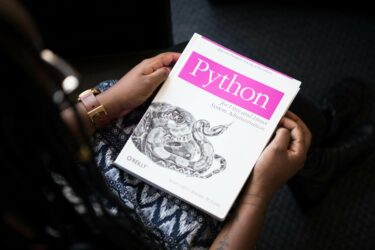Read full review of BookwormHub.com
This week is dedicated to the puzzling revelations from the world of mathematics. Don’t worry, you won’t have to denote the derivative of a function or play around with integrals (even if you are a fan of such things). There are many students who can’t find the answer to one specific question: “What is the practical value of all these functions and derivatives in real life?” To tell you the truth, mathematics has done a lot to help us understand the world we live in and the way it works. The knowledge you acquire will not only help you to calculate the change in a supermarket correctly but also describe the laws of the universe. The biggest challenge for the scientific articles is to give comprehensive descriptions of the newly discovered math models and ideas. This digest tries to break the stereotypes. You can talk about math in an understandable way. By the way, in case you find it difficult to solve some math problem, look for the math assignment help here. As for now, here’s our small collection of the exciting math news.Twitter Can Predict Crimes
 People use statistical analysis to create boring massive reports no one wants to read. But behold for the new era of statistical methods solving crimes. Well, not solving per se but predicting them. University of Virginia Assistant Professor of Systems and Engineering Information Matthew Gerber suggests using statistical crime prediction methods to spot the correlation between the tweets people send and the crimes. Sounds a bit unrealistic, we know. After all, who would tweet about committing a crime, right?
What Gerber did was quite logical. He collected over 1.5 million tweets which had been posted between January and March of 2013 from the Chicago area and mapped them with the crime records of the same area. The preliminary analysis made it possible to identify the common topics of discussion. He then used forecasting models to predict the crimes to take place the next month. The results were very promising with Gerber predicting 19 out of 25 crime types. Looks promising. Who knows, maybe in the future Twitter will help the local police departments decrease the crime rate using the effective allocation of police officers.
People use statistical analysis to create boring massive reports no one wants to read. But behold for the new era of statistical methods solving crimes. Well, not solving per se but predicting them. University of Virginia Assistant Professor of Systems and Engineering Information Matthew Gerber suggests using statistical crime prediction methods to spot the correlation between the tweets people send and the crimes. Sounds a bit unrealistic, we know. After all, who would tweet about committing a crime, right?
What Gerber did was quite logical. He collected over 1.5 million tweets which had been posted between January and March of 2013 from the Chicago area and mapped them with the crime records of the same area. The preliminary analysis made it possible to identify the common topics of discussion. He then used forecasting models to predict the crimes to take place the next month. The results were very promising with Gerber predicting 19 out of 25 crime types. Looks promising. Who knows, maybe in the future Twitter will help the local police departments decrease the crime rate using the effective allocation of police officers.
Ideal World with No Restroom Queues
 No matter where in what kind of a public place you might find yourself – in a restaurant, cinema or at an airport – the queue at restrooms will always be longer for ladies. You can see how they look at the happy faces of men walking out from their restrooms with the inevitable feeling of envy and sometimes even hatred. Why do women always have to wait longer? Well, two queuing theorists of Ghent University decided to finally find the answer to this question and also suggest the possible solutions of this problem.
These are the reasons the theorists managed to discover:
There are more toilets in the men restrooms (toilet cabins and urinals) than in those for women (only toilet cabins) while the area is divided equally;
Women spend almost twice as much time there than men;
There is a rush-hour factor when the number of women who need to use a restroom exceeds its capacity. The first two factors are not effective if the overall activity at the restroom is low.
So, what can be done to save women from the long queues? Unisex toilets are the most effective solution according to the researchers. It will allow us to use the distribution of toilets efficiently and avoid traffic jams at the restrooms even during the rush hours.
No matter where in what kind of a public place you might find yourself – in a restaurant, cinema or at an airport – the queue at restrooms will always be longer for ladies. You can see how they look at the happy faces of men walking out from their restrooms with the inevitable feeling of envy and sometimes even hatred. Why do women always have to wait longer? Well, two queuing theorists of Ghent University decided to finally find the answer to this question and also suggest the possible solutions of this problem.
These are the reasons the theorists managed to discover:
There are more toilets in the men restrooms (toilet cabins and urinals) than in those for women (only toilet cabins) while the area is divided equally;
Women spend almost twice as much time there than men;
There is a rush-hour factor when the number of women who need to use a restroom exceeds its capacity. The first two factors are not effective if the overall activity at the restroom is low.
So, what can be done to save women from the long queues? Unisex toilets are the most effective solution according to the researchers. It will allow us to use the distribution of toilets efficiently and avoid traffic jams at the restrooms even during the rush hours.
Practical Use of Origami
 It is truly mesmerizing to watch someone folding paper to get a beautiful 3-D object as the result. There are many things you can do with a flat piece of paper but origami is not the most efficient one. It was not up until now in any case. Almost a decade ago, a PhD. student at the University of Waterloo, Erik Demaine, came up with an algorithm of turning a piece of paper in any 3-D shape. Sounds amazing, but using this algorithm you can create something out of nothing. But there was a significant disadvantage of this method – it was not efficient.
Luckily for the humanity, Demain found a colleague, Tomohiro Tachi of the University of Tokyo, who could assist him in developing a new, improved method. They are planning to present the new algorithm very soon and launch a free software helping to generate origami crease patterns. The idea of this algorithm is to determine the minimum number of seams required to produce the desired shape. The researchers’ model uses little triangles to create the necessary shape with practical foldings. They also use the Voronoi diagram to calculate the crease patterns automatically.
It is truly mesmerizing to watch someone folding paper to get a beautiful 3-D object as the result. There are many things you can do with a flat piece of paper but origami is not the most efficient one. It was not up until now in any case. Almost a decade ago, a PhD. student at the University of Waterloo, Erik Demaine, came up with an algorithm of turning a piece of paper in any 3-D shape. Sounds amazing, but using this algorithm you can create something out of nothing. But there was a significant disadvantage of this method – it was not efficient.
Luckily for the humanity, Demain found a colleague, Tomohiro Tachi of the University of Tokyo, who could assist him in developing a new, improved method. They are planning to present the new algorithm very soon and launch a free software helping to generate origami crease patterns. The idea of this algorithm is to determine the minimum number of seams required to produce the desired shape. The researchers’ model uses little triangles to create the necessary shape with practical foldings. They also use the Voronoi diagram to calculate the crease patterns automatically.
Predict the Next Internet Meme with 95% Accuracy
 It seems that there is a new meme born every single day. Some of them last for months, others cease to exist quite fast. Have you ever wondered why it is so? Why some memes become more popular than others? Researchers at The University of Manchester’s School of Mathematics and data analysis company Spectra Analytics decided to find that out.
They have analyzed the data on the internet trends of 2011. You will be surprised to know that there is a mathematical model that describes and predicts those trends. It’s called “Complex contagion“. The researchers used mathematics and data analysis to define the phenomenon of contagion theory. If you feel unconvinced that this model can actually predict the behavior of millions of people, the researchers tested it. The model showed 95% accuracy predicting the results of the renowned Ice bucket Challenge which took place in 2014.
It seems that there is a new meme born every single day. Some of them last for months, others cease to exist quite fast. Have you ever wondered why it is so? Why some memes become more popular than others? Researchers at The University of Manchester’s School of Mathematics and data analysis company Spectra Analytics decided to find that out.
They have analyzed the data on the internet trends of 2011. You will be surprised to know that there is a mathematical model that describes and predicts those trends. It’s called “Complex contagion“. The researchers used mathematics and data analysis to define the phenomenon of contagion theory. If you feel unconvinced that this model can actually predict the behavior of millions of people, the researchers tested it. The model showed 95% accuracy predicting the results of the renowned Ice bucket Challenge which took place in 2014.








